Last updated on March 2nd, 2025
Are you sick of your boiler losing pressure and having to keep repressurising it? Recharging the expansion vessel might be the solution you need to get it fixed properly. I have been repairing and servicing boilers for over a decade and recharging the expansion vessel is a common job.
Recharging expansion vessel
To recharge an expansion vessel you must keep pumping air into it and dropping the pressure on the boiler to get the water out. You can do this by draining the water (pressure) from a drain valve, or you can use the pressure relief valve like I do, which is much easier.
You might need to replace the pressure relief valve after it has blown the water out as sometimes they don’t close fully after being used. It’s already blown the water out many times because of this problem so using it to drain won’t change anything.
Video guide
Step-by-step guide
How I recharge expansion vessels:
- Close the flow and return valves on the boiler
- Open the pressure relief valve (PRV) until the pressure gauge is at zero
- Connect your pump to the expansion vessel
- Pump up the vessel to the correct pressure (1 bar is fine for most)
- The boiler pressure gauge will also rise, open the PRV again
- Pump up the vessel again
- Open the PRV again
- Repeat until the boiler pressure gauge stops moving
- The boiler pressure gauge should be at zero and expansion vessel pressure at 1 bar
- Remove the pump from the expansion vessel and fit the cap on the Schrader valve
- Open the flow and return valves
- Repressurise the boiler via the filling loop until the pressure gauge is around 1.5 bar
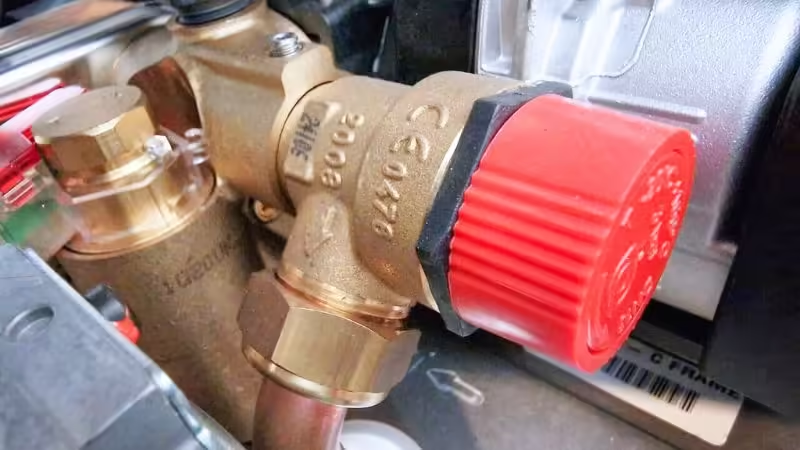
Faulty expansion vessel symptoms
Faulty expansion vessel symptoms are easy to spot:
- Expansion vessel full of water
- Boiler pressure too high or too low
Expansion vessel full of water
A surefire way to know if you have a faulty expansion vessel is to see if it’s full of water. You can check this easily by removing the cap on the Schrader valve (like on a car tyre) on the expansion vessel and pressing the valve in. If water comes out, the diaphragm inside is split and the vessel needs to be replaced. There should be air coming out of the valve but if no air or water is coming out then you will need to recharge the expansion vessel.
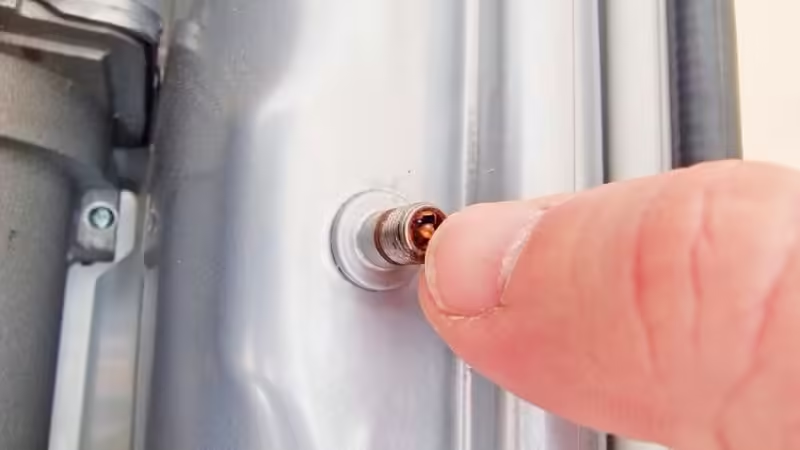
Boiler pressure too high or low
The biggest faulty expansion vessel symptom is the boiler pressure being too high which will cause the pressure relief valve safety device to let the water out and the pressure will drop to zero. This symptom tells you that the expansion vessel either needs recharging or the rubber diaphragm inside has split and the vessel needs to be replaced. You must check if the expansion vessel is full of water to find out.
How to check vessel pressure
To check the expansion vessel pressure you will need a pressure gauge. You must find the vessel’s Schrader valve and connect the pressure gauge, just like on a car tyre. You will need to drop the boiler pressure to get the correct pressure of the expansion vessel, the boiler pressure gauge must be at zero to check the vessel pressure accurately.
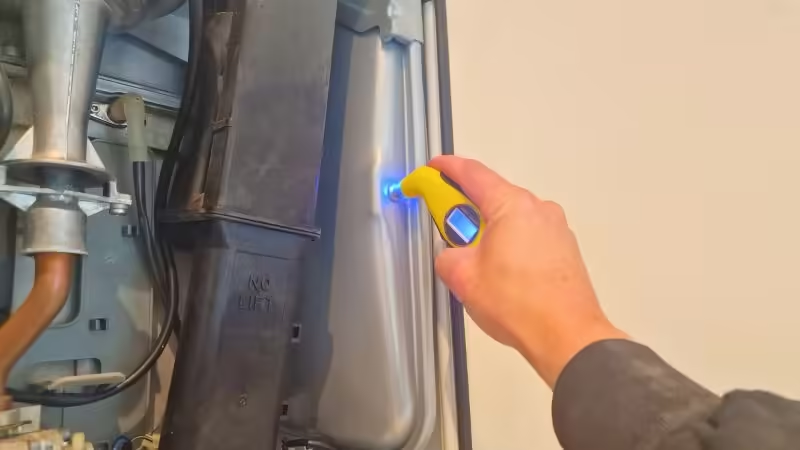
Expansion vessel pressure setting
To find the exact expansion vessel pressure setting you should check the sticker on the vessel or in the boilers manual. If I can’t find it, I recharge the vessel pressure on a combi boiler to 1 bar (14 psi).
Expansion vessel pump
To recharge an expansion vessel you will need a pump, a pressure gauge, and possibly a Schrader valve extension hose. Any bike pump will do the job but it’s a lot easier with a better one.
Regin
When I first started recharging expansion vessels I used a Regin hand pump specifically made for expansion vessels. They do the job but with so much unnecessary work. Only electric pumps for me now.
Makita
The expansion vessel pump that I use the most is my 18v Makita battery-operated pump. It blows car tyres and bike tyres up with ease but if you don’t already have Makita batteries and a charger then it can be expensive to buy everything.
Cycplus
Another electric pump I love and sometimes use on expansion vessels is a Cycplus pump. It’s unbelievably small and light and can blow car and bike tyres up with ease also. I mainly use it for my mountain bike but it’s brilliant for expansion vessels. Just set the pressure you want and press the button, simple. You charge it with a micro USB cable.
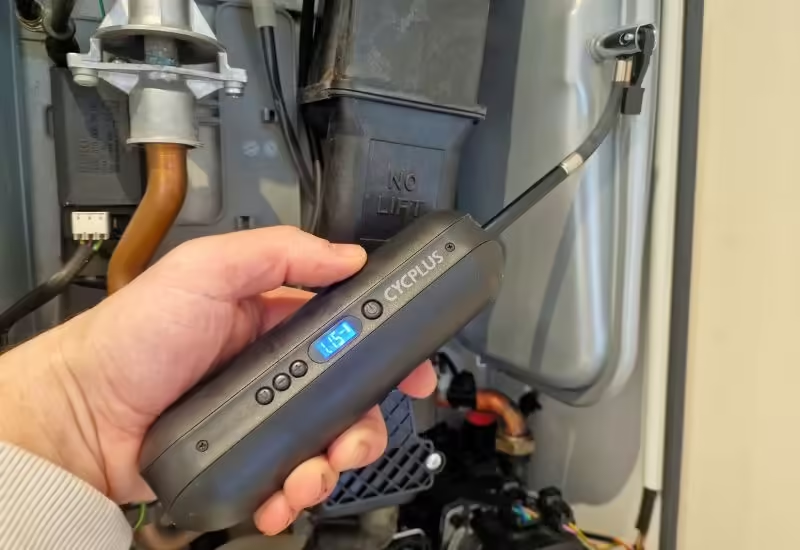
Conclusion
Recharging an expansion vessel can be hard when doing it for the first time, but using a good electric pump is key. The vessel has lost all of its air and is full of water so the rubber diaphragm inside is not doing anything.
When you recharge an expansion vessel you are forcing air into one side of it and forcing the water out of the other.
Feel free to ask any questions in the comments below, and I’ll do my best to help. If you found this post helpful, please consider sharing it.


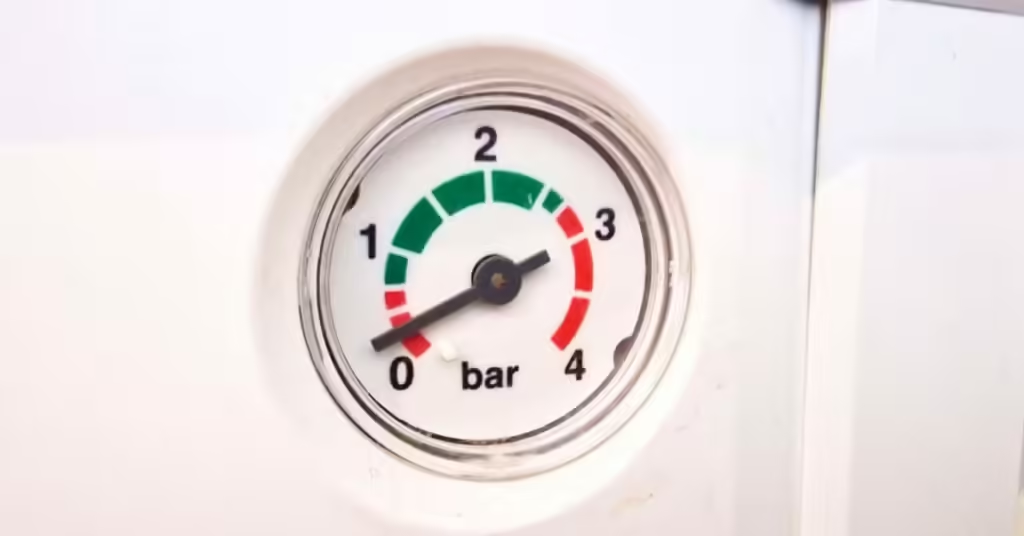
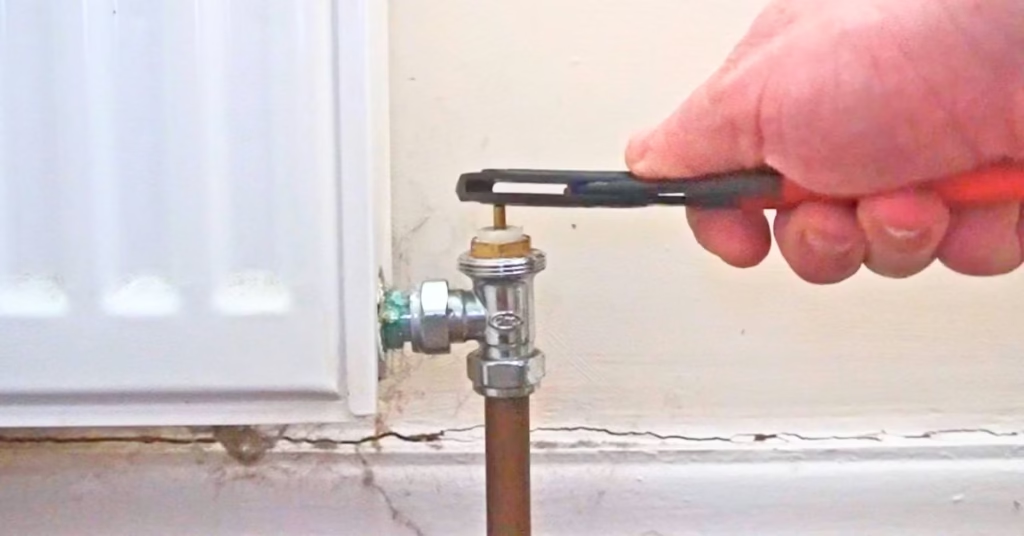
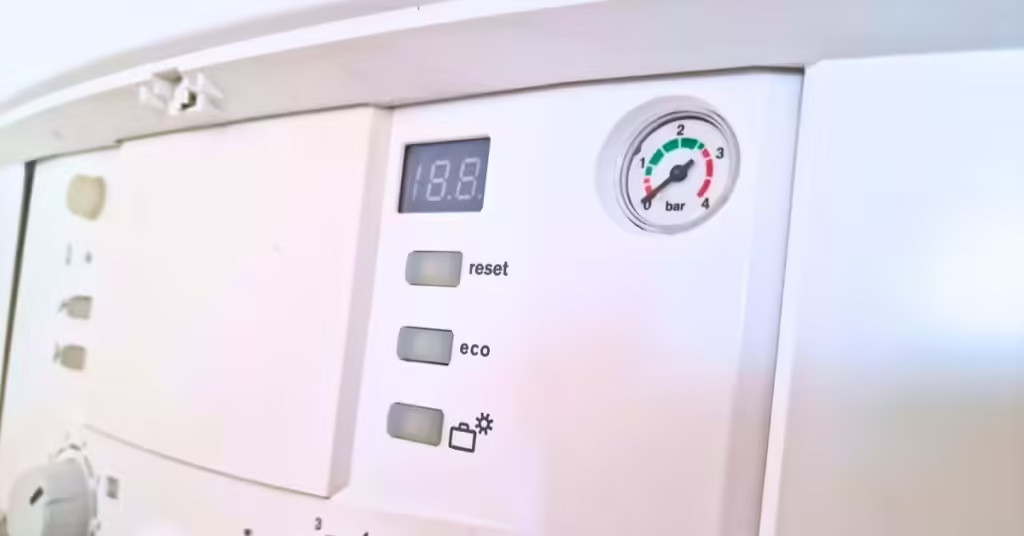
Cheers Steven
Thanks for the guide, very easy to understand.
Our system, as well as an internal expansion vessel, has an external retrofitted expansion vessel. The heating engineer that fitted it explained that the external vessel was necessary, as with it being a large CH system, the internal expansion vessel was always just about at capacity when the central heating was on.
Do you have to charge both expansion vessels, and if so how does your procedure differ?
Thanks – Paul
Hi Paul, it’s the same procedure for recharging both expansion vessels. You only need to recharge them if they lose pressure which you can check with a hand held pressure gauge. If they are below what they are meant to be at, then you will need to pump them up to recharge. Each expansion vessels recommended pressure will be different so you will need to check the expansion vessel or the manual for each one.
Excellent! Just what I needed to know. Thank you very much.
You’re welcome Brian. Thanks for the feedback
I got a pro to do this and have noticed the pressure is slowly decreasing over weeks. Should I replace the expansion vessel or could it be something else?
Sounds like it could be the pressure relief valve letting the water out slowly. This can happen after recharging the expansion vessel. You’ll probably need to replace the pressure relief valve. You should check the copper blow off pipe outside for any signs of water.
Thanks so much for this guide. Dead easy to follow and sorted out the pressure issue on my baxi boiler.
Hi,
A very concise and clear description. I had tried this previously but only pumped it up once and clearly the expansion vessel was still mostly full of water.
I redid this again today and probably recharged the tank 5 times (I’m not sure it was the full capacity of the tank, but as the only easy method was to reduce the pressure from a radiator I was worried about letting too much air into the system. The boiler was running at 3.5Bar (so was requiring frequent top ups as the PRV was venting). Now it its around 1.5Bar when at running temp so much better. I didn’t get to the point where the pressure in the loop was not increasing when pumping up the vessel (even on the last inflation the boiler pressure gauge was still rising to around 1Bar) – do you think I should continue to release pressure and re-inflate the vessel more or be happy with the current running pressure. The boiler is an Alpha CD 35C and doesn’t appear to have a manual release (the front of the boiler literally states releasing pressure from the radiators if needed!).
Thanks,
Chris
Hi Chris,
You need to keep recharging (pumping) the expansion vessel and releasing the pressure until the boiler pressure gauge stops moving completely. The expansion vessel pressure should be around 0.9 bar when the system pressure is zero. Then repressurise the system pressure to around 1.5 bar on the boiler pressure gauge.
Hi. Same sort of situation. Got the rad valve open. Pumping to 0.9 bar. Pressure gage always goes up.
Boiler was working fine since installed 2 years ago. greenstar cdi
Any help would be really appreciated. I have pumped it over 20 times now still no change
Hi
thanks for a c comprehensive guide to expansion vessel issues. Im sure ai have a problem with mine my boiler pressure goes up and down like a yo yo. A very small amount of water came out of the schraeder valve when pressed do you think this means it is faulty (membrane split)?
Hi Stephen, if it was just a very small amount of water then the expansion vessel diaphragm might be good. They sometimes spit out little bits of water created via condensation that’s collected inside but should be good to recharge the vessel with a pump.